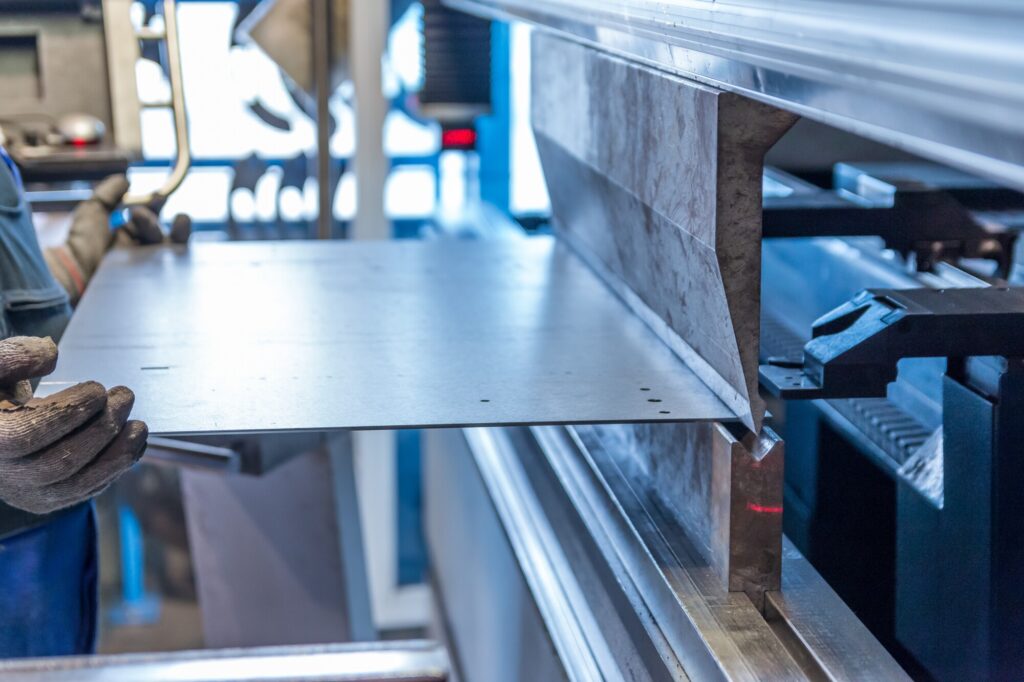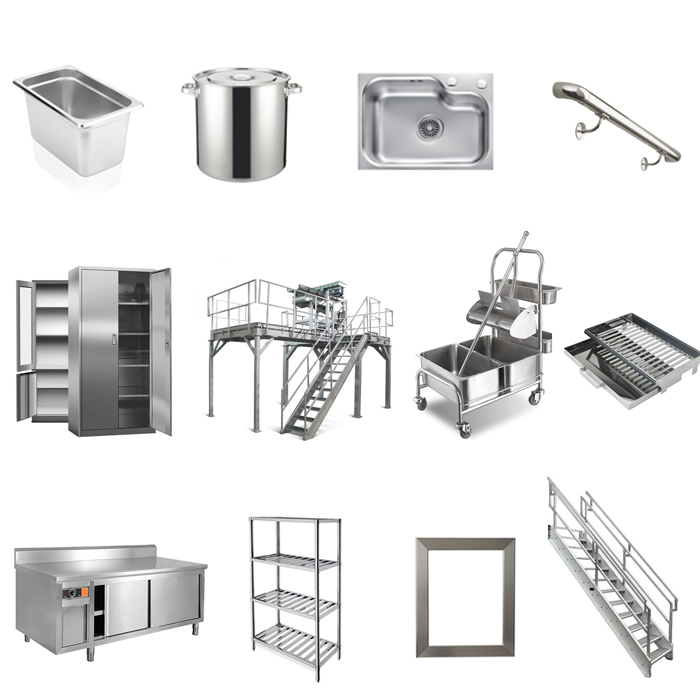Comprehensive Evaluation of Cutting-Edge Techniques in Steel Construction Industry
As the steel fabrication market proceeds to advance, the integration of advanced methods has actually come to be essential for staying competitive and satisfying the needs of contemporary manufacturing requirements. In this dynamic market where modern technology plays a crucial duty, understanding the nuances of these cutting-edge techniques is not just an option yet a need for those looking to build in advance in the ever-evolving globe of steel manufacture.
Laser Reducing Innovations
In the world of steel manufacture, laser reducing innovations have actually reinvented the accuracy and effectiveness of metal shaping processes. By harnessing the power of focused laser light beams, suppliers can currently attain unequaled degrees of accuracy when cutting through various kinds of steels. This innovation enables intricate layouts to be implemented with marginal material wastage, making it a cost-effective solution for sectors needing high precision components.
Among the crucial advantages of laser cutting is its capacity to manage a variety of products, consisting of stainless steel, light weight aluminum, and carbon steel, with simplicity. The process generates tidy, burr-free edges, removing the requirement for additional ending up steps. Furthermore, the non-contact nature of laser reducing decreases the threat of material contamination, resulting in better end items.
Moreover, laser reducing machines can be configured to make swift, precise cuts, dramatically decreasing manufacturing time compared to typical cutting techniques. This speed and accuracy make laser reducing particularly appropriate for mass production atmospheres where performance is critical. As modern technology continues to development, laser cutting is poised to play a progressively essential role in the steel construction sector.

CNC Machining Innovations
The advancement of CNC machining technologies has introduced a brand-new era of precision and effectiveness in the steel manufacture sector. Computer System Numerical Control (CNC) devices have reinvented steel manufacture by offering exceptional precision and repeatability in the production procedure. Alpha reo. One of the essential developments in CNC machining is the combination of innovative software program systems that make it possible for real-time surveillance and changes, leading to enhanced performance and quality assurance
In addition, the growth of multi-axis CNC machines has actually permitted the manufacture of intricate steel parts with detailed layouts that were formerly challenging to create. These devices can carry out a broad range of machining operations, consisting of milling, exploration, transforming, and grinding, all with high levels of precision.
Moreover, the unification of automation and robotics in CNC machining has structured manufacturing procedures, minimized lead times, and minimized the margin of mistake. This assimilation of innovative innovations not only enhances performance however also ensures regular high quality across all made steel parts. To conclude, CNC machining innovations proceed to drive developments in the steel fabrication sector, setting brand-new requirements for precision and performance.
Automated Welding Technologies
Automated welding innovations have actually reinvented the steel fabrication sector, improving performance and precision in the welding procedure. These innovative technologies make use of computer-controlled systems to automate the welding process, bring about higher performance levels and boosted weld quality. Among the key advantages of automated welding is the ability to do complex welds with consistent precision, reducing the probability of errors and remodel.
Robot welding systems are at the leading edge of automated welding modern technologies, providing unparalleled speed and accuracy. These systems can handle a large range of welding tasks, from basic to detailed, easily (metal fabrication melbourne). By utilizing sophisticated sensing units and software, robotic welders can adapt to variants in product and joint geometry, ensuring an uniform and trustworthy weld
In addition, automated welding technologies enhance work environment safety and security by minimizing the exposure of human welders to dangerous fumes and intense warm. As the steel manufacture sector remains to evolve, incorporating automated welding innovations will be necessary for companies aiming to stay competitive and fulfill the expanding needs for high-grade welded products.
Robotics Integration in Fabrication
Using robotic systems in fabrication processes has become a critical technique for improving efficiency and precision in modern manufacturing settings. Robotics assimilation in steel manufacture supplies a myriad of advantages, consisting of enhanced efficiency, improved quality control, and enhanced safety and security actions. These innovative robot systems are geared up with sophisticated sensing units and shows abilities, allowing them to perform intricate jobs with a high degree of accuracy and repeatability.
Among the crucial advantages of robotics integration in steel manufacture is the capability to automate repetitive jobs, such as product handling, cutting, welding, and setting up processes. This not only quickens production cycles but additionally minimizes the risk of human mistake, causing higher total product top quality. Furthermore, robots you could try this out can run 24/7, dramatically boosting manufacturing output and conference tight task deadlines.

3D Printing in Steel Manufacturing
Having reinvented the steel manufacture industry with robotics assimilation, the burgeoning exploration of 3D printing in steel manufacturing is positioned to more advance the realm of contemporary production strategies. 3D printing, additionally known as additive manufacturing, provides unmatched layout liberty and complexity, enabling the creation of elaborate steel structures that were formerly unattainable with standard production approaches. By utilizing computer-aided design (CAD) software, manufacturers can precisely control the layer-by-layer deposition of steel material, resulting in get rid of enhanced functionalities and geometries.
One of the key advantages of 3D printing in steel manufacturing is its ability to lower product waste dramatically. Unlike subtractive production procedures where excess product is trimmed away, 3D printing only uses the necessary quantity of steel needed for the final part. This performance not only causes cost savings yet also lines up with lasting production techniques by reducing environmental impact.
Additionally, 3D printing allows quick prototyping and modification, enabling the manufacturing of small sets of intricate steel elements with brief lead times. As steel fabricators melbourne the technology proceeds to grow and become extra obtainable, its combination into mainstream steel fabrication procedures is anticipated to drive development and performance throughout the industry.
Conclusion
Finally, the steel construction market has actually seen substantial advancements in techniques such as laser cutting, CNC machining, automated welding, robotics integration, and 3D printing. These advanced innovations have actually reinvented the means steel items are made, leading to increased precision, efficiency, and cost-effectiveness. Continued investment in these innovative techniques is essential for the industry to remain affordable and satisfy the demands of contemporary manufacturing processes.
As the steel fabrication industry proceeds to advance, the assimilation of innovative methods has become essential for remaining competitive and meeting the needs of modern-day manufacturing standards.One of the key benefits of laser cutting is its capability to deal Your Domain Name with a wide variety of materials, consisting of stainless steel, light weight aluminum, and carbon steel, with ease.Automated welding technologies have actually transformed the steel fabrication sector, improving efficiency and accuracy in the welding process.Having actually transformed the steel fabrication sector through robotics assimilation, the blossoming exploration of 3D printing in steel production is poised to more advancement the world of contemporary production methods.In verdict, the steel construction sector has seen substantial developments in strategies such as laser cutting, CNC machining, automated welding, robotics combination, and 3D printing.